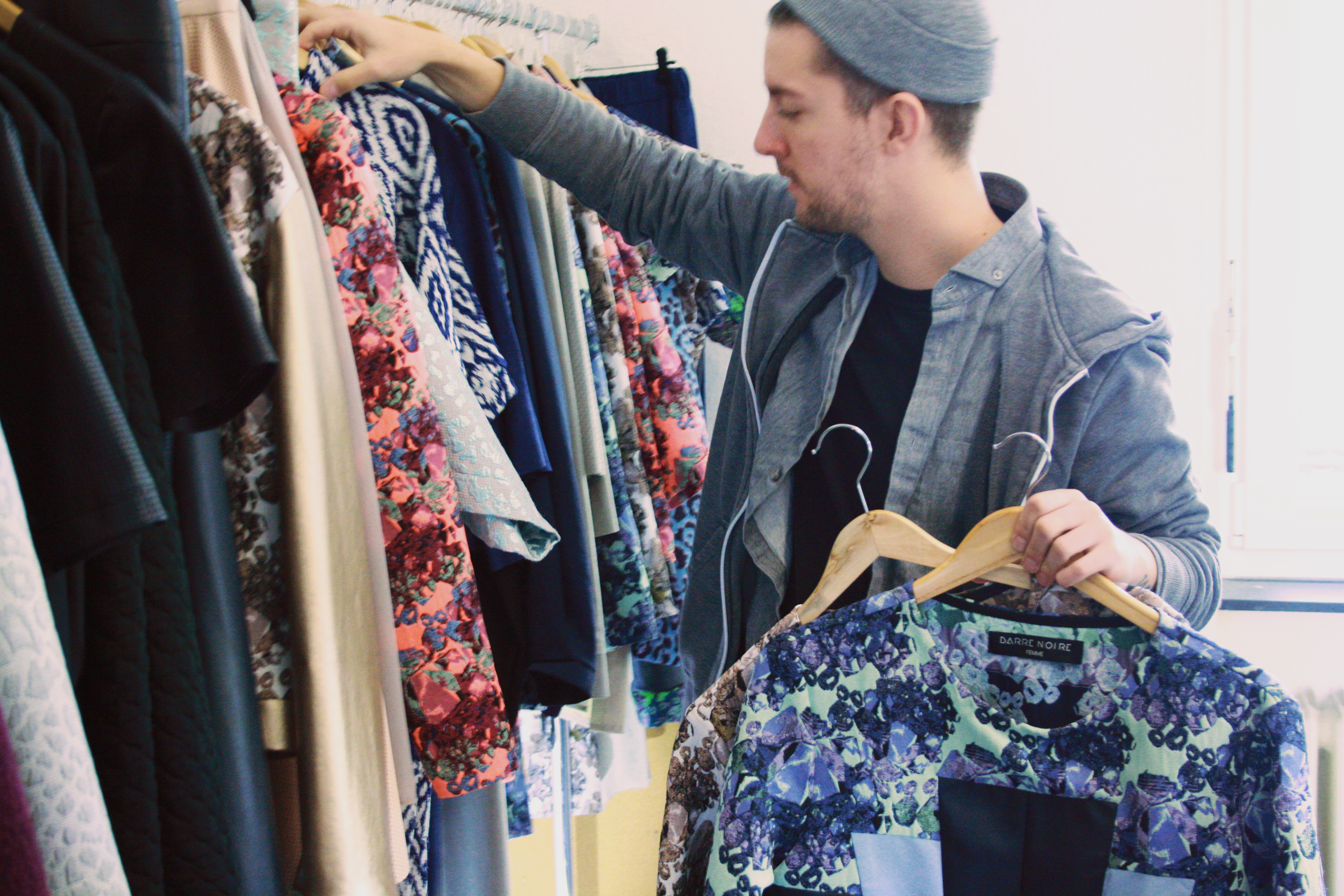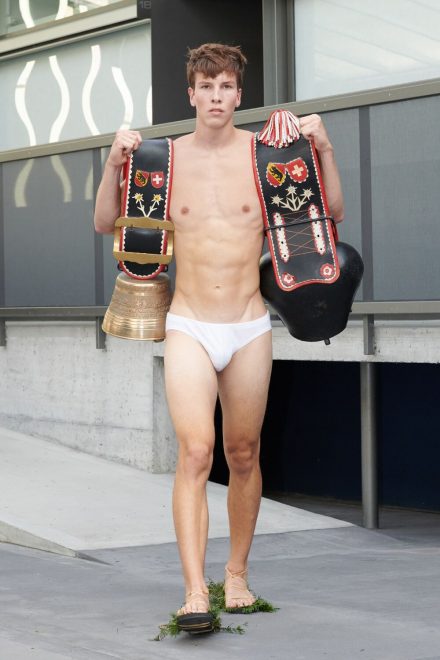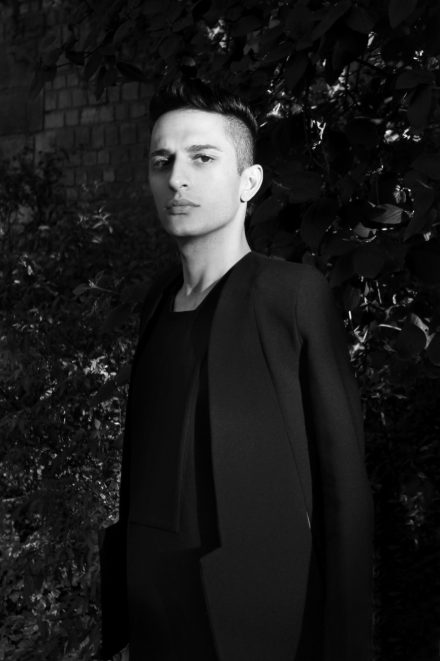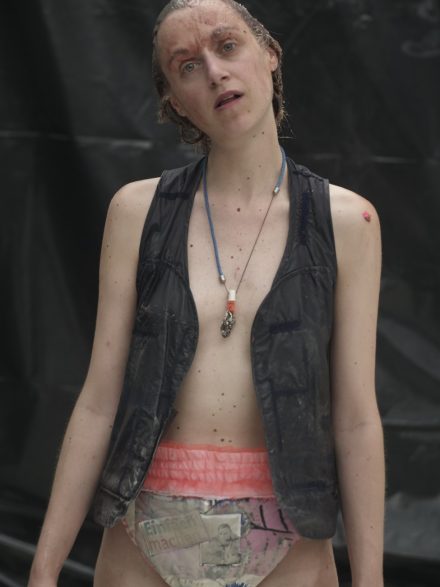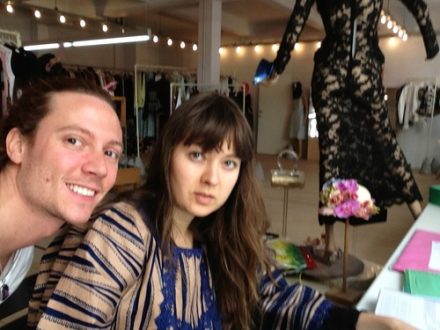
“Every sketch starts with a black line.” So begins the narrative behind the name of Berlin-based fashion label Barre Noire. If a black line is where the story begins, what the brand has managed to develop in five years is far from the simplicity of a sketch. Founded in 2009 by designer Timm Süssbrich, Barre Noire’s cheery brocade work, loud prints, and dramatic colors evinces a different side to Berlin fashion, one which sidesteps the imperious stranglehold of clean cuts and minimalist subtlety. After a stint on the television series “Fashion Hero,” Süssbrich racked up several fruitful collaborations with global brands, including SKYY VODKA. Recently, Œ Magazine stopped by the Barre Noire studio to chat with the talented young designer about his current projects, inspirations, and insights into the current pulse of Berlin’s creative movement.
Œ: Several years ago when you set out to start your label, you were only producing women’s wear. Your label has since developed to include both women’s and men’s wear. How did this come about?
TS: I was part of the TV Show “Fashion Hero” last year. It was a casting show for German fashion designer. There was a challenge in the fifth or sixth episode where I had to create a men’s wear look without any color or pattern. I had never done this before and it was the first “think outside the box” moment. This was the beginning of “Barre Noire Homme” and it worked. SS2015 was my second menswear collection.
Œ: Earlier this season it was announced that you teamed up with SKYY VODKA. Could you tell me more about this collaboration and how it came about?
TS: It was actually a triangle collaboration. SKYY VODKA, BARRE NOIRE and a bunch of fashion blogger who created new looks. The bloggers started with their own mood boards that tried to capture the typical Berlin style, their favorite party style, and the Barre Noire style. We selected some mood boards and designed individual outfits for each blogger. It was a very new and different way to work. We got the various inspirations and created new individual looks in typical Barre Noire fabrics and styles.

Œ: What does it mean to you to work with such an established global brand outside of the usual fashion realm?
TS: It’s always fun to work with global brands and to show them the confusing and non-regulated world of fashion. Global brands like SKYY VODKA are working with strict periods and deadlines. Fashion is totally creative. We also have deadlines, but the working day is totally different. I guess for both brands it was a big challenge, especially to understand each other’s way of thinking and working and to point out the similarities for a successful collaboration.
Œ: Are you a vodka drinker yourself?
TS: I like mixed drinks. Cocktails with a lot of ingredients and elements.

Œ: What is your favorite part in creating a collection?
The first days when we start new season. This week or maybe the next 2 weeks are the most important period for a new collection. The team is sitting together to scribble and discuss the new silhouettes, colors and fabrics.
Œ: I saw your show at fashion week and you, along with maybe Hien Le, probably sent the most looks down the runway this season. What inspired you to create such a huge collection of looks for spring/summer 15?
TS: My collection is growing day by day. Actually there was no limit in the beginning. Last season we tried a limit set at 20 looks, but we had so many ideas and it was so much fun in the atelier every day; we can’t stop being creative. It was a kind of creative flow. In the end we had 32 looks. Maybe it was a little too much for the studio show, but i liked it.

Œ: In a city like Berlin, it is easier to start your label than to keep it going throughout the years. As a young designer, what is your main focus as you try to build your business?
TS: Berlin is perfect to start your business, but turns into a bitch after a few years. This city is very creative – style, image, influences, zeitgeist … everything is constantly changing. There is huge creative input, you can have a studio with cheap rent and the creative network in Berlin is incredible. But Berlin is like a childish student with a monthly ticket for Berghain. The slogan “arm aber sexy” from 2003 is still true. Fashion is fun, but in Berlin it’s not a well-paid job—it’s not serious business. I was born in Berlin, grew up in Berlin and started my business in Berlin. I love this city, but it’s not the best place for creating and selling fashion.
Œ: Are you paying attention to what other designers are doing in here?
TS: I did Berlin Showroom in Paris a few weeks ago. 20 labels from Berlin in one showroom. It was kind of fun and very interesting to see the other labels and collections. Of course I paid attention before; I watched every runway show on the Fashion Week homepage. I know Hien Le and his collections. I’ve known Tim Labenda for years and really love his collections, but I’ve never compared any of us. There are some labels with very similar styles, but it’s not my style.

Œ: Do you make of the so called minimalist aesthetic coming out of Berlin these days?
TS: The Berlin minimalist aesthetic is bullshit. There is no minimal aesthetic – it’s scandinavian. Let’s check the fashion blogs: H&M, COS, & other stories, Monki. I like the Scandinavian style! But all the self-styled fashionistas and blogger just adapted the grey oversized boring scandinavian look, added a little grunge and Nike air max and we call that Berlin style? Years ago there was a typical Berlin style, but no one can remember.

Œ: What’s your favorite look for the upcoming season?
TS: I really like easy outfits. Basics combined with highlight pieces. In the end I create collections you can combine with your own pieces. A white shirt with my neon pattern pants or a black blouse with one of my leather skirts. My favorite look is a mix – it has to be laid back with a highlight.

Œ: How would you describe your personal style?
TS: Is it the minimalist aesthetic look? I have no idea. I have a 24/7 job, but I’m not dressed like a fashion designer. It’s comfy and relaxed.
